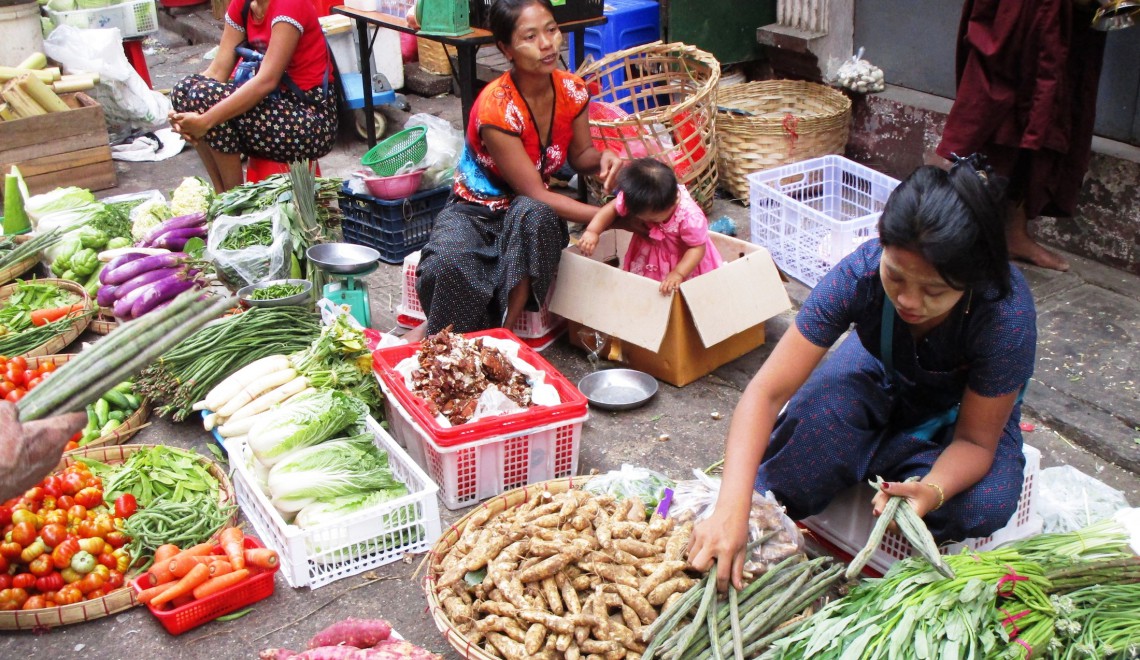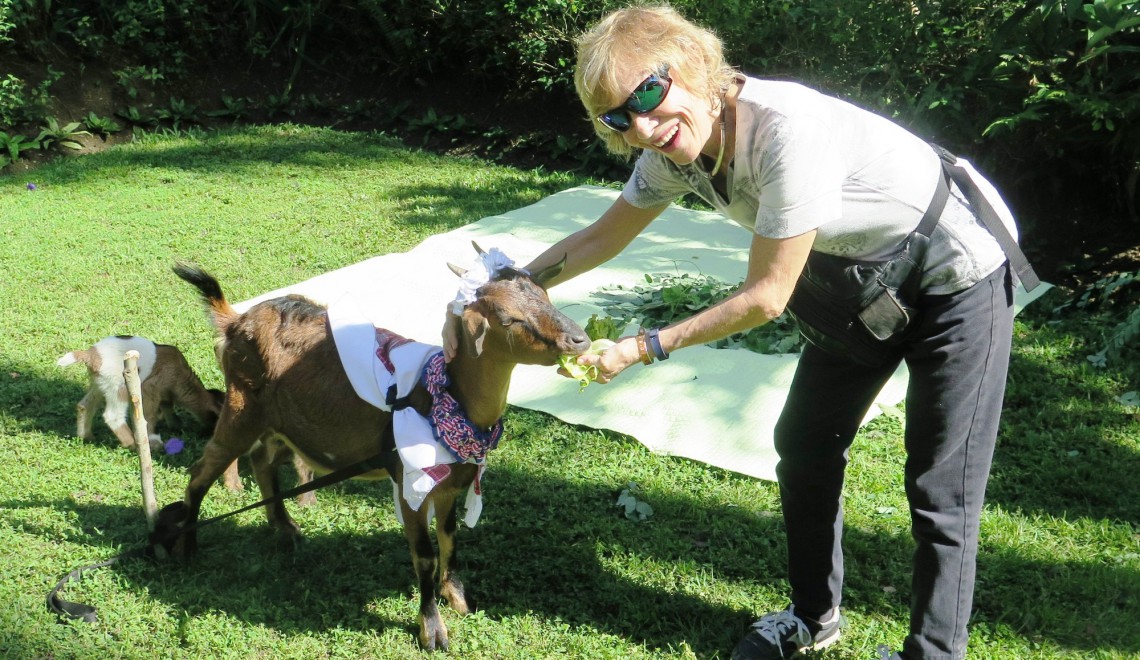Few people would think that Michelle Obama and Supreme Court Justice Clarence Thomas have much in common; however, they would be wrong. Both are part of the small but unique Gullah community, primarily residing in South Carolina and Georgia whose roots extend from Wilmington, North Carolina to St. Augustine, Florida. Gullah are descendants of slaves from the early 18th century who share a common language, culture, history and food. Michelle celebrated that heritage at the 2012 inauguration; Justice Thomas credits it for much of his silence on the Court. Recently, Congress has taken steps to put the Gullah (also known as Geechee) culture back on the map.
But first, some background. In the 1700’s, rice plantations flourished along the coastal areas and barrier islands stretching from North Carolina to Florida. Because they required specific skills, slaves were brought to these coastal areas from similar environments in Africa where rice had been grown successfully for centuries. In many cases, the Africans’ knowledge of rice cultivation far exceeded that of their masters. Because the work required a wide variety of skills that only the Africans possessed, they were often accorded more responsibility and autonomy than their cotton-picking counterparts.
They came with their own language, beliefs and customs. Because they were so isolated in coastal regions not connected to the mainland until the 1950’s, their Gullah culture flourished and proliferated. The Gullah people developed a separate Creole language and distinct culture patterns that included more of their African traditions than African-American populations in other parts of the United States. A recent visit to Myrtle Beach brought me in direct contact with the culture, its descendants and its current connection to the Nation’s capital.
Meet Veronica Gerald, owner of the Ultimate Gullah Shop whose great-great-great grandmother was kidnapped from Siera Leone at age 9 and spent her whole life at Brookgreen Plantation, as did her descendants.

Brookgreen Gardens Oak Alley
Brookgreen Plantation, one of the largest and most prosperous in South Carolina during the 18th century, was built by Gullah slaves.
It was combined with three other plantations to form Brookgreen Gardens in 1930 and is now a showcase of art, gardens and nature — with the largest display of American representational sculpture in the world. Fox, deer and birds add their voices to the wide expanse of nature trails, tree-lined vistas and bronze, marble and stone edifices.

Brookgreen Gardens Sculpture
But once upon a time, it was the Gullah voices that echoed from these fields and dominated the landscape.
And Brookgreen is only one of many places where the Gullah voices have been drowned out by modern conveniences. Visiting a golf course constructed on a former plantation site that includes an early slave cemetery,

Veronica Gerald
Veronica observed: “My grandfather is buried on the 10th hole.” She also noted that Gullah cemeteries are always built near water (and apparently water hazards…) so that the spirits can float back to Africa.
Such tales are one of the many delights of a Gullah Tour that Veronica conducts, tracing their history from slavery through modern day. A stop at her Ultimate Gullah shop

Sweet grass baskets
brings you in contact with all kinds of Gullah wares including crafts, foods, jewelry and books.
My favorite? The De Nyew Testament, the Bible totally written in Gullah. I would have been hard-pressed if I had to translate even one page into English.

New Testament in Gullah
Gullah is very much its own language. Initially, those who spoke it were looked down upon as illiterate. It has been said that one of the reasons Clarence Thomas maintains his much-reported silence on the Supreme Court is that he’s always been a bit self-conscious about the way he speaks.
Now meet Ron Daise, Vice President of Creative Education at Brookgreen Gardens, where he conducts weekly Gullah-oriented programs. He also is chairman of the Gullah Geechee Cultural Heritage Corridor Commission. In 2004, the Gullah culture was placed on the list of America’s 11 Most Endangered Historic Places by the National Trust for Historic Preservation.

Example of the Gullah Language
In 2006, the Commission was created by Congress to change that, by recognizing the contributions of the Gullah people and preserving historical sites as well as their folklore, arts, crafts, music and, of course, their language.
Ron tells of one evening in April 2013 when he was watching American Idol, and one of the season’s top two finalists, Candice Glover (later the season 12 winner), was asked to reveal something no one knew about her. When she responded that she spoke a second language called Gullah-Geechee, Ron claims he stood up in his living room and cheered!
Time to meet Bunny Rodrigues, a story-quilt maker and former owner of the Gullah

Quilt tells story of Michelle Robinson Obama’s heritage
Ooman Museum in Pawley’s Island along the Myrtle Beach Strand who spearheaded the creation of a large 90”x70” quilt dedicated to re-telling Michelle Robinson Obama’s family history from slave quarters to White House. On a January 2008 visit to her maternal ancestors’ hometown in Georgetown, just south of Myrtle Beach proper, Michelle became immersed in a history being visually retold that she was not all that familiar with.
The bottom left panel in the quilt shows a slave cabin reflecting where Michelle’s great-great-grandfather, Jim Robinson, had been born into slavery about 1850. Other panels depict her great-great grandmother working as a slave, her great-grandfather Fraser Robinson, Sr. who learned how to read and write because he lived with a white family, on up through Michelle’s marriage to Barack and their ascension to the White House, a stark contrast to the slave cabin’s origin.
Fraser’s philosophy of education got passed down to his son who graduated high school and went to Chicago to find work (that was Michele’s grandfather) and the rest is history. In the center is a life-size Michelle sporting a cap and gown, with Princeton and Harvard delineated in large letters above. “I wanted to emphasize her education,” claims Bunny, “and have that be an inspiration, that you can have ancestors in a slave cabin and end up at Harvard.”
Although Bunny did the story line and cut out every piece, over 40 people were involved in putting the quilt together, from threading needles to making coffee to taking pictures. People eager to do something, anything, to touch a piece of history, which, indeed, it has become. From January 11 to September 31, 2009, the quilt hung in the Washington, DC Historical Society. By Obama’s second inauguration, the quilt made it to the big time: it rode in a Gullah-Geechee Corridor Commission float in the 2013 inaugural parade.
An emphasis on Gullah culture is enjoying increased notoriety from North Carolina to Florida. So y’all come on down -– meet with descendents of slaves, take home some sweet grass baskets, feast on hoppin’ John and no doubt you’ll “Hunnuh come’yuh ta hab a gud time.”
For more information about The Ultimate Gullah store and its tours, contact Veronica Gerald at ultimategullah@hotmail.com; for more information about the Gullah-Geechie Corridor, contact Ron Daise at rondaise09@gmail.com; for more information about Michelle Obama’s quilt and the future of the Gullah Ooman Museum, contact Bunny Rodrigues at 843/237-9603.
About Fyllis Hockman:
Fyllis Hockman is a Washington, D.C.-based freelance travel writer. She is the author of AAA Guidebook: A Photo Journey to Washington, D.C. and co-author of the Pelican Guide to Maryland. Ms. Hockman is a member of the Society of American Travel Writers and Travel Journalists Guild..
Photos by Victor Block.





A timely article for me. REading “Cane River” about 3 generations of slaves in LA and I’m planning a trip to the area.
Now, I have another interesting site to visit. Each planation exposes me to facts from the slave’s view. It is a rich history with so many facets to understand. Thanks, Fab Placez for putting this up for me to catch!
Mary Ann, so glad Fyllis’ article was helpful. Two years ago I visited the islands off the coast of Georgia and had the privilege to visit a Gullah Community. From my experience I know you will find the Louisiana adventure rewarding.
Thank you for your comment.
Good story. There was actually not long ago, perhaps 4 years, a book that came out on the Gullah, its history and people. Also, a good story on Frederick Douglass (there is a museum in the DC area) is long overdue and needs to be told. Many Americans simply do not know much, if anything, about this man who despite his race was very prominent in his days.
Thank you for your comment. Fyllis’ story about Gullah was helpful for me also. My introduction to the Gullah Community was from a visit to the Georgia barrier islands. Fyllis’ story was an enhancement to my first knowledge of the Gullah history.